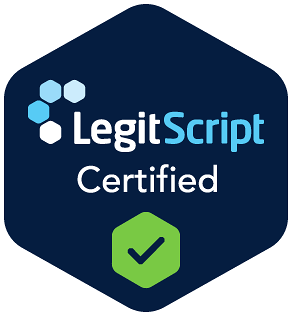
The following blog post is for entertainment and informational purposes only. It is not intended to provide medical advice or diagnosis. Please consult your doctor before making any health-related decisions.
To optimize muscle enlargement and performance many scientists have examined new technologies and drugs. They aim to find innovative approaches to enhance the physiological processes that govern muscle building. One such avenue of interest is the utilization of Rapamycin. It is a compound initially known for its immunosuppressive properties. But now it is capturing attention for Rapamycin muscle growth impact. In this post, we acquaint you with the intricate operating principles of this drug and its effects on muscle building. We describe the current state of research and Rapamycin muscle growth implications for athletes, fitness enthusiasts, and persons seeking to optimize their muscle-building endeavors.
Rapamycin has been extensively utilized in the medical field to prevent organ rejection in transplant recipients. Beyond its immunosuppressive properties, this compound has garnered attention for its ability to modulate the special target of the mTOR pathway. It is a central adjuster of cellular processes.

Mechanism of Action
The principles of Rapamycin muscle growth action primarily revolve around its ability to depress the special target of the mTOR pathway. It regulates the cellular processes, protein formation, cell increase, and exchange process. In the context of muscle growth, mTOR participates in the encouragement of muscle protein formation. It is a major process in the building and repair of muscle tissues.
We introduce a detailed breakdown of Rapamycin muscle growth impact and its interaction with the mTOR pathway.
mTOR Informing in Muscle Cells
The mTOR pathway integrates numerous signals from the cellular environment. They include nutrient availability, energy status, and growth factors.
In muscle cells, mTOR activation provides the regulating of anabolic processes. One of them is protein formation. It is applied for muscle gain and repair. It is one of the main Rapamycin muscle growth effects.
Initiation of Protein Formation
When activated, mTOR promotes the initiation of protein formation. This process involves the transposition of genetic information into the biologically active substances responsible for muscle building. This is one of the major Rapamycin muscle growth impacts.
Ribosomal Biogenesis
Active mTOR informing also encourages other processes. They lead to the manufacturing of special structures. They are responsible for protein formation. An increase in their number enhances the cell’s capacity for protein manufacturing. This is the Rapamycin muscle growth impact.
Cellular Growth and Hypertrophy
Through its influence on protein formation and biogenesis, mTOR promotes cellular growth. So, Rapamycin muscle growth operation fosters muscle hypertrophy. It is the increase in the size of individual muscle fibers.
Suppression of Protein Synthesis
By depressing mTOR, Rapamycin suppresses the pathways to increased protein formation. This, in turn, can negatively impact the rate at which muscle cells create new proteins.
Reduction in Muscle Mass
Some studies have involved systemic administration of this compound. They have shown that prolonged depressing of mTOR can lead to a lowering in muscle mass. This is critical for maintaining or building muscle tissue.
Potential Dose-Dependent Effects
Research suggests that the Rapamycin muscle growth impact is dose-dependent. Lower doses or intermittent administration can mitigate the inhibitory effects on mTOR. They potentially offer a more accurate approach.
Local Delivery and Targeted Effects
Some studies explore the possibility of local delivery of this compound directly to muscles. The aim was to achieve more targeted effects while minimizing systemic exposure and probable adverse effects.
The mechanism of Rapamycin muscle growth action is intricately tied to its ability to depress the mTOR pathway. This inhibition can lead to a lowering in muscle protein formation and, consequently, muscle mass. The context of administration, dosage, and targeted delivery methods are crucial considerations. Ongoing research aims to unravel the complexities of this interaction and explore strategies to optimize the Rapamycin muscle growth benefits while minimizing possible dangers.
Research Findings

Research findings regarding the Rapamycin muscle growth impact are complex and sometimes contradictory. They reflect the versatile nature of the mTOR pathway and the intricate mechanisms of muscle protein creation. Some studies suggest possible depressive effects on muscle gain due to mTOR pathway suppression by this drug. Other research explores nuanced technologies to leverage their outcomes. We introduce the next key research findings.
Systemic Rapamycin Administration and Muscle Atrophy
Several studies involving systemic intake of this compound have reported muscle atrophy. They indicated a reduction in muscle volume. It is one of the undesired Rapamycin muscle growth effects.
The suppression of mTOR down-regulates protein creation and leads to a negative impact on muscle growth.
Dose-Dependent Effects
Research suggests that the Rapamycin muscle growth impact depends on the doses. Higher doses or prolonged intake leads to greater muscle atrophy.
Some studies explore the concept of intermittent or lower-dose intake to minimize adverse effects while potentially preserving the outcomes.
Localized Delivery and Targeted Effects
Studies investigating localized delivery of this drug directly to muscles aim to minimize systemic exposure while focusing on specific tissues.
Localized delivery technology of Rapamycin muscle growth use, such as injections or implants, offers the possibility to target muscle cells more precisely and mitigate systemic adverse effects.
Impact on Muscle Regeneration
Research on the impact of this compound on muscle regeneration following injury or exercise-induced damage is an active area of study.
Some studies suggest that Rapamycin muscle growth operation can suppress initial regeneration. But it also can enhance the quality of regenerated muscle tissue in the long term.
Combination with Exercise
Combining this compound with resistance exercise is exploring. Some studies suggest that exercise-induced mTOR activation may counteract the depressing Rapamycin muscle growth effects on muscle protein formation.
Research on concurrent the drug’s utilization with exercise aims to find a balance that optimizes muscle gain while managing possible drawbacks.
Impact on Autophagy
The cellular process of recycling damaged components is autophagy. Rapamycin muscle growth impact can foster its effects on muscle gain.
Autophagy is regulated by mTOR. Rapamycin’s suppression of mTOR can enhance autophagic processes. So, it can influence muscle homeostasis.
Species and Context Variability
Findings may vary between species and models. Some studies show negative Rapamycin muscle growth effects in rodents. Others indicate possible outcomes.
Extrapolating findings from animal models to humans requires an accurate evaluation of biological differences.
Ongoing Clinical Trials
Clinical trials are underway to evaluate the rapamycin muscle growth effects related outcomes in humans. These trials aim to provide valuable insights into the safety, efficacy, and optimal dosing strategies for rapamycin muscle growth utilization.
Research findings on the Rapamycin muscle growth impacts are diverse. They reflect the intricate interplay of cellular processes. The dose, longevity, and context of the drug’s intake, as the specific goals of muscle growth or regeneration define the shaping of the outcomes.
Ongoing research continues to uncover the nuances of rapamycin muscle growth effects. They are aimed at identifying practical strategies for harnessing its possible outcomes while mitigating possible drawbacks.
Does Rapamycin Inhibit Muscle Growth

The relationship between rapamycin and muscle growth is complex and context-dependent. Rapamycin muscle growth use can suppress muscle enlargement by depressing mTOR. The type of its intake, the dosage, and the longevity of healing are critical issues. Continuous research endeavors to discover methods that leverage the Rapamycin muscle growth advantages for specific purposes, like fostering muscle growth, while mitigating undesired adverse effects. The intricate connection between this compound and muscle enlargement highlights the need for further exploration before contemplating its widespread application in the realm of muscle building.
Considerations for Athletes and Fitness Enthusiasts
Dosing and Timing
The optimal dosage and timing of rapamycin muscle growth administration are very major concerns. Researchers are exploring whether specific dosing schedules or intermittent healings can harness the outcomes of this compound without compromising muscle building.
Potential for Synergistic Effects
Combining this compound with other interventions, such as resistance training or specific nutritional strategies, offers synergistic Rapamycin muscle growth effects. Understanding how this compound interacts with established muscle-building practices is an area of further research.
Mitigating Adverse Effects
Rapamycin is not without possible adverse reactions. The researchers are working to identify methods to neutralize these effects while preserving muscle growth gains. Balancing the positive Rapamycin muscle growth impact with the possible drawbacks is needed to define practical applications.
Localized Delivery
Localized delivery of this compound to the muscles, through targeted injections or topical applications, is being explored as a way to maximize its impact on muscle growth while minimizing systemic appearances.
The Rapamycin muscle growth impact is a multilateral topic. It requires careful consideration of dosing, timing, and possible adverse manifestations. Research is still in its early stages. The possibility of this compound modulating mTOR and influencing muscle protein turnover opens new methods to optimize muscle-building techniques. The scientific community continues to unravel the complexities of the Rapamycin muscle growth effect. Athletes, fitness enthusiasts, and Researchers alike eagerly await more insights that could reshape our understanding of muscle-building principles and practices.







